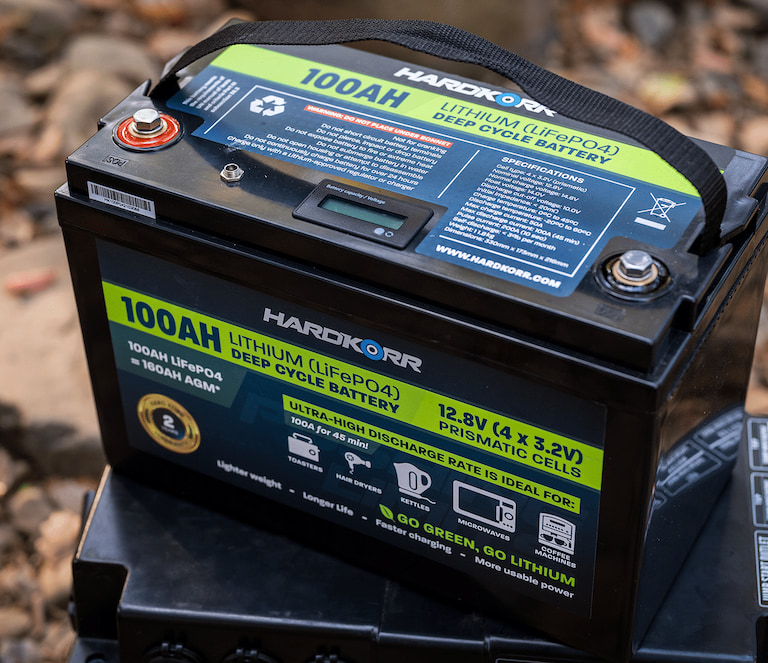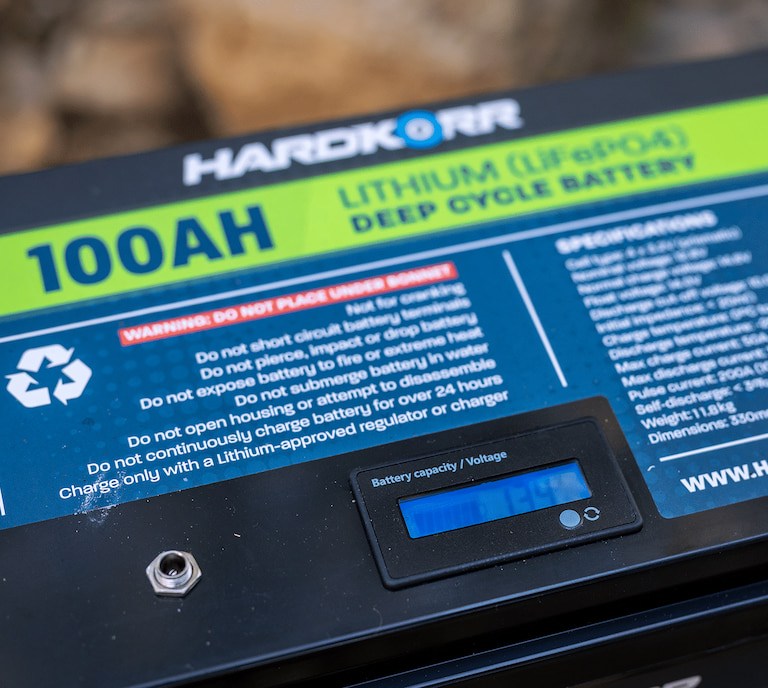Contents
Whether you’re out camping, fishing, hunting, off-roading, or boating for days at a time, you’ll want a stable supply of power. This is to run basic devices like phones and lights, or something needing more bite, such as fridges and electric stoves. Throw in a few luxuries like air conditioning and a decent stereo, and your power needs grow exponentially. While there’s the possibility of running everything through the car or boat battery, you run the risk of a flat. Have safety and convenience in mind and get a secondary, deep-cycle battery instead.
Currently, a Lithium deep cycle 12V battery offers the best balance between performance and price and will last the longest.
What are Deep Cycle Batteries?

Compared to starter batteries in vehicles, a deep cycle battery is one that can be discharged to extremely low levels (some to 90 per cent of their rated capacity) without damaging the battery. This is due to their intended purpose and how they’re constructed. A starter battery needs to supply high voltage and for much shorter periods only discharging a small portion of its rated capacity. The high-power output means that the battery plates inside are thin and the lead is applied in a sponge-like form much like foam. Plates cover a larger surface area allowing for maximum bursts of power.
Deep cycle batteries, on the other hand, have thicker plates that allow for deep cycling, or longer and more charging and discharging cycles. This can be done hundreds or thousands of times. There’s a slower but more stable supply of voltage for a longer period. That’s the reason why starter batteries are specified in Cold Cranking Amps (CCAs), whereas deep-cycle batteries are in Ampere Hours (Ah).
Types of Deep Cycle Batteries

Deep cycle batteries are offered In a few different types, from flooded lead acid to AGM or gel batteries, and lithium deep cycle batteries.
- Flooded Lead Acid (FLA) – These batteries are the oldest type, consisting of lead plates ‘flooded’ in an electrolyte mix of sulfuric acid and water. Batteries can be discharged to roughly 50 per cent capacity. These batteries are known to gas, releasing hydrogen and oxygen when operating, so need more consideration in placement as well as higher maintenance needs. They’re also quite heavy (some weighing 30 kilos or more) and need more work in setup.
- Absorbent Glass Mat (AGM) – Unlike FLAs, AGM batteries are sealed with thin fibreglass layers separating the lead plates. These also help with electrolyte absorption, so are more efficient. AGM batteries can reach near-full charge, and be discharged to 80%, compared to 50 per cent in FLA batteries. They’re easier to maintain, lighter, and safer to use. But also, a bit dearer. Some variants can also be used as starter batteries, especially in vehicles with a start/stop function.
- Gel Batteries – Gel batteries have electrolytes in the form of gel, or more precisely, a silica compound. The design means easier handling and more safety. There’s no liquid as such and gel batteries are virtually maintenance-free. They can safely be discharged to 75 per cent.
- Lithium-Ion Batteries – This Is the newest take on deep cycle batteries. When discharging, lithium atoms in the negative electrode, the anode, are ionised and separated from their electrons. The lithium ions then move through the electrolyte and a porous separator to the positively charged cathode to charge connected devices or appliances. The batteries are classified by the materials that make up the electrodes. Mobile phones and laptops have lithium batteries with cobalt oxide in the cathodes and graphite in the anodes. Lithium iron phosphate (LiFePO4) deep-cycle batteries are the most common type used today. They’re also standard in hybrid cars and EVs.
Why Choose a Lithium-Ion Battery?

There are dozens of advantages to lithium-ion batteries:
- Low Weight – they are about half the weight of comparable FLA, AGM, and gel batteries. A typical 100Ah LI-ion battery weighs around 12-14 kilos, while a lead acid battery in the same capacity weighs 25 kilos or more.
- Safe and Eco–Friendly – there are no toxic substances, lead, or leaky acids that can present themselves as safety and eco hazards.
- More Power – A lithium deep cycle 12 V battery operates at higher voltages than other variants and can provide over 12.8V even when only 20% battery capacity is left.
- Steady Output – LiFePO4 batteries don’t suffer from drainage that is memory effect, maintain steady output at any temperatures (FLA and AGM batteries struggle when hotter), and are vibration and shock-resistant. They also have a significantly higher depth of discharge (DoD) rates, well over 80 per cent.
- Long Life Spans – The higher initial costs are offset by the ridiculously long lifespan. Well-maintained batteries can last up to 20 years and have very high cycles, over 3000.
- Equivalent lead acid batteries last 2-3 years (200-300 cycles), while AGM batteries average around 6-7 years or roughly 1000 battery cycles.Very Fast Recharging – Lithium-ion can handle higher amperage from the charger, meaning faster charging times.
Factors in Choosing the Right Battery
Capacity in Ampere hours determines the type and number of devices and appliances a single battery can charge. For smaller setups, look to 100Ah batteries that will be more than enough for weekend getaways and the usual devices and camping accessories. Larger batteries are meant to last longer before charging, and a lithium battery can be safely discharged at much lower rates. 240Ah batteries feature in bigger solar setups running more power-hungry appliances, such as fridges. Determine your power needs, and get the right battery, and in the right capacity.
Also, consider the rest of your setup. Lithium batteries need separate chargers and will be well-suited with battery monitors for optimal use and lower maintenance.

